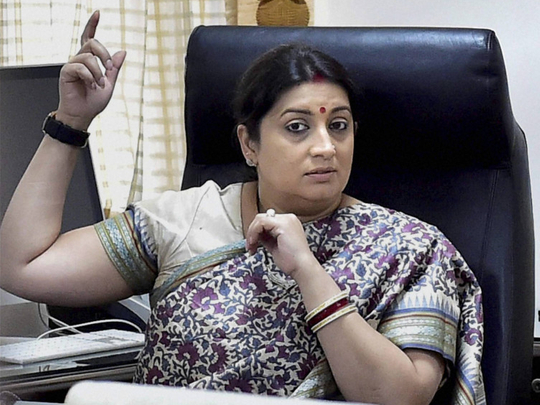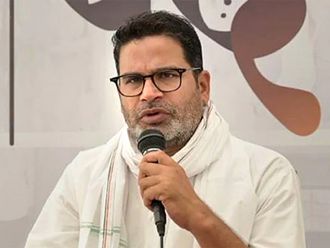
The reshuffle of the Indian cabinet last week quickly became all about the so-called demotion of Smriti Irani. The former Human Resources Development (HRD) minister, who has often been described as “ignorant and arrogant”, was posted to the less glamorous Ministry for Textiles.
Irani, during her two-year stint has courted needless controversies and launched verbal assaults at the slightest provocation against senior parliamentarian, bureaucrats and academicians who, she said, “lay siege upon my integrity” and sought to “hang me”. Social media trolls instantly unleashed a barrage of sexist jokes aimed at Irani, with some comments from political leaders of opposing parties, which at best could be described as abusive. Self-proclaimed political pundits, mainstream media, television anchors and talking heads exploded, analysing the reasons for her sudden downfall. A variety of reasons were trotted out — that she was too shrill, too brash and too abrasive.
In reality, the deep-rooted misogyny of Indian society was exhibited, where women like Irani, who is a go-getter, aggressive and often inadvertently steps on just too many toes in her brisk rise to the top, is misconstrued as bossy or just an outsider in the coterie, trying to head-butt her way in. She faced this criticism even during her appointment two years ago, where I had urged in this very column to give her a fair chance. In truth, she was given a plum position, which she whiled away due to lack of experience, compounded by her inability to listen to sound advice.
She was also haunted by the patriarchal political classes, who created an atmosphere of persuasive prejudice and antagonism, along with the Left-leaning intelligentsia who were enraged that a former actress who lacked academic qualifications would be meddling with the country’s finest academic institutions.
To make matters worse, she is articulate, perpetually combative, donning a body armour of aggression and pride of having made it without being a political or intellectual progeny. She was an actress in one of the million soaps on Indian television, had never won any election, had no political base in the intricate caste system that rules Indian politics, yet she was catapulted to a Cabinet berth.
It is true that Irani was not successful as an HRD minister. She came across as stubborn, with little understanding and often seen judging senior directors and vice-chancellors of universities on their ideology. She was even said to have scolded and played head mistress to senior academics, threatening to have them fired if the job was not performed to her satisfaction.
Irani also shared an uneasy relationship with the officers of her ministry, where several key bureaucrats left before the completion of her stint due to her “abrasive behaviour”. Though of late, she was able to mend her ways, most felt it was too late and too little for a minister holding a key portfolio. Bharatiya Janata Party insiders say she had over-played the card, drawing in unnecessary media attention because of her statements and actions in spite of being a political lightweight.
Though, in truth, many initiatives were successfully completed during her tenure. The launch of the Global Initiative of Academic Network )Gain), under which, eminent scholars from abroad were recruited to teach students in higher education, and the creation of the indigenous ranking framework for universities and educational institutes were two such promises.
The ministry managed to clear pending appointments, including those of eight vice-chancellors and heads of the All India Council for Technical Education, National Council of Educational Research and Training and Indian Council of Philosophical Research, and focused most of the resources of her ministry on facilitating consultations for the new education policy. The Irani-led ministry also completed the Swachh Vidyalaya target, building more than 400,000 toilets in government schools across the country.
However, for Irani, not all is lost, as the Textile Ministry gives her the opportunity to learn from her mistakes, and give democracy its true meaning over entitlement. The ministry — with a revenue of $100 million, contributing 2 per cent to India’s sross domestic product or 14 per cent of the country’s export earnings — is the second-largest employer in India after agriculture.
It also gives Irani the opportunity to reach rural voters and use her position to impress the larger masses who dictate electoral fortunes in the country. During her time in the HRD Ministry, she, despite her follies, proved to be a hard-working, persuasive minister, having the acumen and the calibre to set things right, even willing to travel that extra mile to achieve the goals set by her.
She has always come across as a woman willing to take on a larger challenge, whether taking on Congress vice-president Rahul Gandhi at his family bastion of Amethi or even Congress leader Kapil Sibal in Delhi’s Chandni Chowk constituency. For Irani, this is probably the biggest challenge and an opportunity to prove her mettle in a world marred by patriarchal prejudices.
Archisman Dinda is a journalist based in Kolkata, India.










